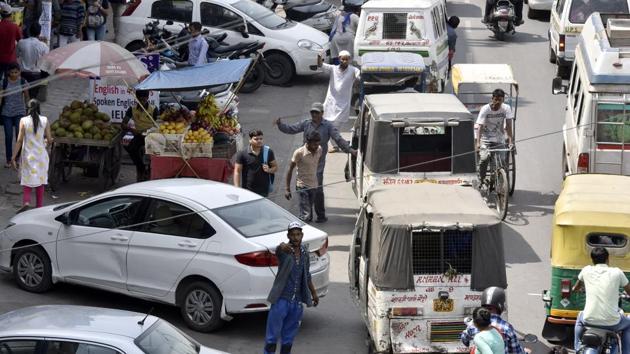In Delhi, choice between reducing cars or expanding parking slots
Delhi sees at at least 400 new cars being registered every day. Instead of enforcing demand-side management, the city administration somehow feels obligated to accommodate the ever-expanding private car fleet.
A recent study in the United States, the global pioneer in mass motorisation, revealed how the country overdid itself. So much so that parking slots in most American cities outnumber homes — by 27 times in Jackson (Wyoming), 19 times in Des Moines, five times in Seattle and four times in Philadelphia.

New York was the only city in the study with more homes than parking, thanks to the popular use of public transportation.
Pointing out that a smaller share of Americans drive today, the study by the Research Institute for Housing America cautioned that parking space remained under-utilised despite investing swathes of public land and large sums in building them. It recommended “building more efficient cities that contain fewer unused parking spaces and more of everything else.”
Emulating the original American model, India continues to pack its cities with cars. Delhi, for instance, sees at at least 400 new cars being registered every day. Worse still, instead of enforcing demand-side management, the city administration somehow feels obligated to accommodate the ever-expanding private car fleet.
Parking already takes up as much as 14% of Delhi’s road-length. But studies have found that privately-owned cars are not driven for more than three to four hours a day. Yet, each car occupies, on an average, three different parking locations every day.
The three municipal corporations, which service 96% of Delhi’s area, provide 55,000 slots in surface parking and 17,500 in multi-level parking lots. These are only the legal slots that come for a fee, which was only recently raised from a flat ₹10 to ₹20-100. There is no stopping the mafia from encroaching on public land and earning a fast buck.
Across the world, there is a growing realisation that no matter how much parking is provided, it will never be enough. Even multi-level parkings have hit their vertical limit. That is why progressive cities are trying to reduce parking space to discourage people from buying cars. Maybe it is time for Delhi to stop playing catch-up and plan long term.
We have no law to stop those without legal parking space from buying cars. On the contrary, car owners rightfully park on public land outside their homes because they pay a one-time parking fee at the time of registration of a vehicle. Such nominal fees cannot guarantee a lifetime of free parking and must be hiked to a point that it helps recover at least a portion of the cost of the land used for parking.
In the more competitive market of the National Capital Region, private builders charge as much as ₹3 lakh for an additional parking space. Early this year, the draft parking policy — a first for Delhi — recommended a fee for stationing a car on public land in a residential neighbourhood. But municipal officials doubt if this will get support from the political class.
While the idea of earmarking a certain minimum of parking for specific types of development is losing traction across the worls, Delhi is indirectly encouraging people to buy more cars.
In East Kidwai Nagar, a neighbourhood recently redeveloped for housing government officials, 10,500 underground parking slots have been provided for 4,608 apartments. In the new flats to be delivered by the Delhi Development Authority, each unit will come with at least two parking slots.
It is the same for malls and markets, which allocate an unreasonable amount of space for parking. The ones that are within walking distance of a Metro station can at least make approach paths navigable by losing some parking spots.
The mess created by too many cars is not just about the dynamics of pricing. They are the biggest roadblocks, cluttering public land that is essentially meant for pedestrian use. They restrict access to bus stops, Metro stations and even to emergency services.
To check the fleet size, we need laws that make one pay incrementally for buying a second or a third car. To limit the use of cars already purchased, we need rational parking fees and congestion taxing in the crowded and polluted zones of the city.
But as experiments in Singapore and London have shown, none of these measures work in the absence of an efficient alternative to cars.
So it will be a good idea to channel the resources earmarked for building more parking lots to strengthening Delhi’s public transit system. We can either feed the monster or fight it.




